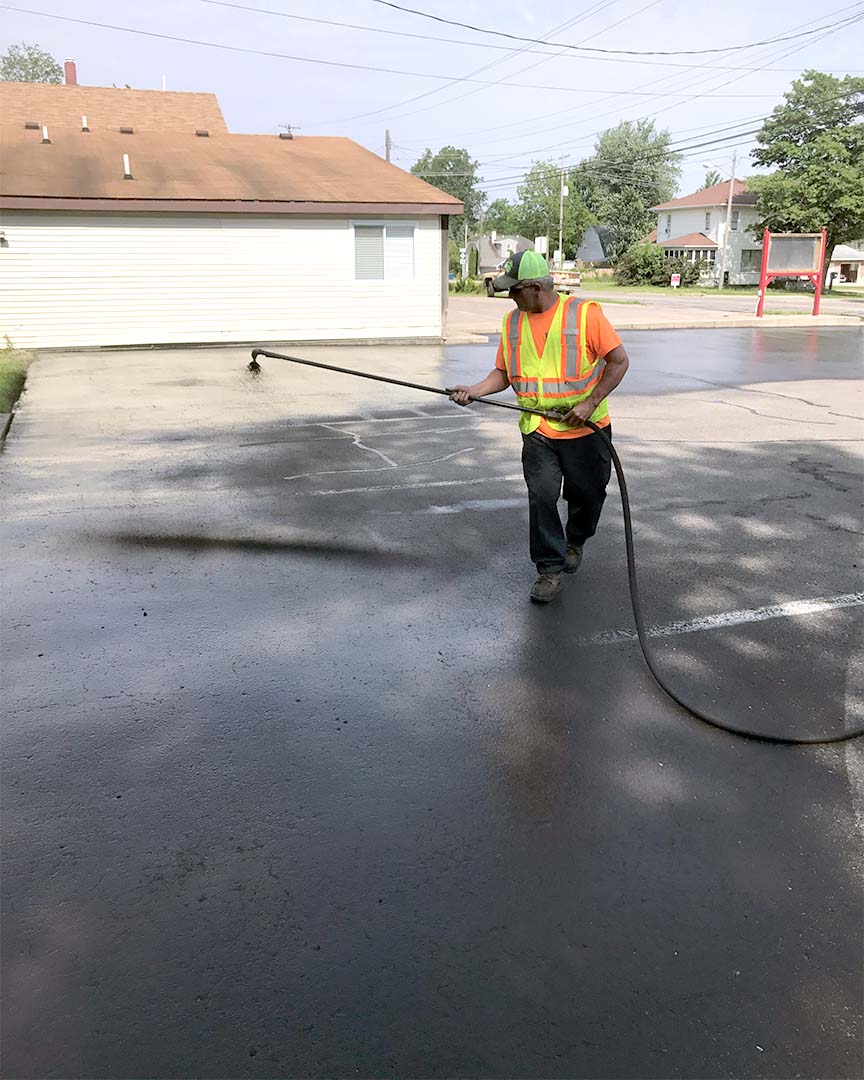Cold Mix Asphalt Vs. Hot Mix Asphalt: Which Is Right for You?

Structure Differences
Cold mix and hot mix asphalts vary dramatically in their structure, with unique qualities that affect their efficiency and applications. Cold mix asphalt is created by emulsifying the asphalt binder with water and an emulsifying agent prior to blending it with accumulation. This approach permits the asphalt to be practical at reduced temperatures, making it excellent for momentary fixings and for usage in cooler climate condition. Hot mix asphalt, on the various other hand, is produced at high temperature levels, normally between 300-350 ° F, which helps to attain better compaction and an extra resilient last product. The hot mix asphalt manufacturing process includes warming the accumulation and asphalt binder individually before incorporating them at the asphalt plant.
Moreover, cold mix asphalt often tends to be less dense and more versatile than hot mix asphalt. This adaptability makes it better suited for locations with higher degrees of motion, such as driveways or roadways with heavy website traffic. In comparison, hot mix asphalt is known for its high resilience and resistance to rutting and splitting, making it a preferred selection for highways and high-traffic roads where durability is crucial.
Setup Refine Variances
The procedure of mounting cold mix and warm mix asphalt shows significant differences in their demands and procedures. In comparison, hot mix asphalt demands a more elaborate setup process. Due to the heating demands, hot mix asphalt installments are normally brought out by specialists with specific devices, making sure a more structurally audio and irreversible outcome.
Toughness and Durability Factors
When thinking about asphalt alternatives, durability and durability are vital variables to examine for enduring sidewalk performance. Warm mix asphalt (HMA) is understood for its phenomenal toughness and longevity.
In regards to longevity, HMA generally outmatches CMA because of its superior stamina and resistance homes. HMA pavements have a longer service life, calling for less constant fixings and upkeep, which can translate to cost financial savings in the future. Furthermore, HMA pavements are a lot more conveniently adjustable to satisfy details job demands, better boosting their sturdiness.
Cost Considerations
Considering the economic effects wikipedia reference is an important aspect when assessing the choice between warm mix asphalt (HMA) and cool mix asphalt (CMA) for sidewalk tasks. While the preliminary cost of warm mix asphalt is usually higher than that of chilly mix asphalt, HMA usually offers a much more cost-efficient service in the lengthy run due to its remarkable resilience and longevity.
In enhancement to material expenses, it's important to take into consideration the expenses connected with installment and maintenance when contrasting HMA and read the article CMA. Ultimately, the choice between HMA and CMA ought to take right into account not just the preliminary cost but additionally the lasting economic ramifications to establish the most cost-efficient option for the certain pavement project.
Environmental Effect Contrast
Comparison of the ecological influences between warm mix asphalt (HMA) and chilly mix asphalt (CMA) reveals unique differences in sustainability techniques. HMA production requires heats, bring about raised power consumption and greenhouse gas exhausts. The process additionally releases volatile organic compounds (VOCs) and dangerous air toxins (HAPs) into the atmosphere. In comparison, CMA is created and used at reduced temperatures, lowering energy usage and discharges substantially. The lower production temperatures of CMA lead to lowered fuel usage and lower levels of carbon dioxide exhausts, making it a much more eco-friendly choice.
Additionally, the use of CMA often entails recycling existing asphalt sidewalk, promoting resource preservation and decreasing the quantity of waste sent to landfills. By choosing for CMA over HMA, road building and construction jobs can contribute positively to ecological conservation efforts.
Verdict
In verdict, the selection between cold mix asphalt (CMA) and warm mix asphalt (HMA) depends on different factors such as structure, installation process, longevity, longevity, expense, and environmental effect. cold mix asphalt. While CMA provides a economical and fast solution for minor repair services, HMA makes certain remarkable sturdiness and long life for heavy web traffic locations. Think about these factors thoroughly to figure out which kind of asphalt is the appropriate choice for your paving requires

Taking into consideration the financial effects is an important aspect when reviewing the option in between warm mix asphalt (HMA) and cold mix asphalt (CMA) for pavement tasks. While the initial expense of warm mix asphalt is generally greater than that of cold mix asphalt, HMA commonly provides a more economical remedy in More Help the long run due to its premium resilience and durability. asphalt repair.Contrast of the environmental effects in between warm mix asphalt (HMA) and cool mix asphalt (CMA) reveals distinct differences in sustainability practices.In conclusion, the selection between cold mix asphalt (CMA) and warm mix asphalt (HMA) depends on various elements such as composition, setup process, longevity, long life, price, and ecological impact